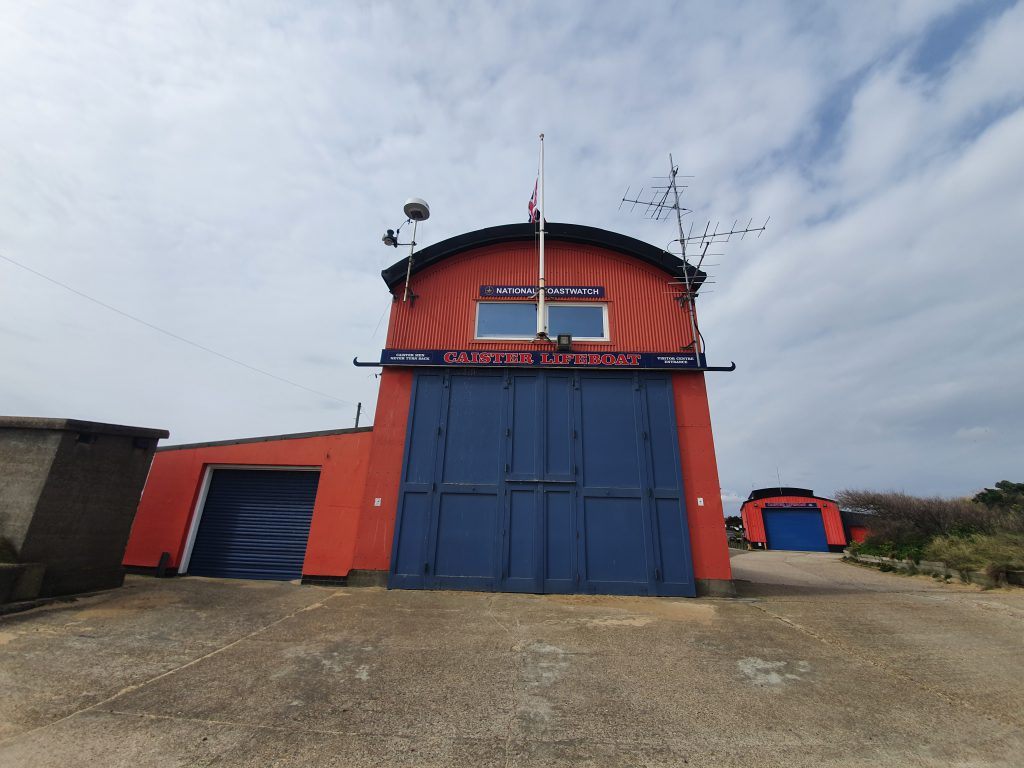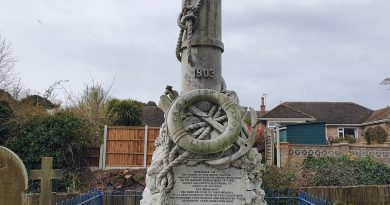Caister-on-Sea – Caister Volunteer Lifeboat Service
It was a breezy morning on the coastline today and it’s also been a notorious area over the centuries for shipping. As early as 1794, the Caister Beach Company established an operation here to salvage wrecked ships and to assist any seaman who needed help. This was part a charitable effort and part an attempt to make money from the salvage, but it was a useful service. A lifeboat was introduced here in 1845 and it was taken over by the RNLI in 1857.
Controversy hit in 1969, when the RNLI decided that they’d close down the lifeboat station here as their new craft at Great Yarmouth was considered powerful enough to cover this part of the coast as well. This wasn’t a decision that was universally supported, so the Caister Men decided that they’d just set up their own independent lifeboat service. When I say “wasn’t universally supported”, there were a lot of angry people. The fishermen of Great Yarmouth made a formal complaint to the Queen, and indeed numerous other people, and Buckingham Palace got drawn into the debate, albeit saying that it wasn’t something that they could intervene on.
Much of the history of this lifeboat station is included on this useful sign (clicking on the image should make it a readable size). The most surprising paragraph to me was:
“The loss of life along the East Anglia Coast was a national disgrace. With 14 major sandbanks, the terrible weather and the poor maintenance of the vessels all taking their toll on shipping. In one 10 year period, 9991 ships were recorded as lost between the Humber and Southwold, a 62 mile stretch of sea. This averages 1000 ships per year, or 20 ships a week”.
This is the new lifeboat station and there are today two boats, the Fred Dyble II which is an inshore lifeboat, and the Bernard Matthews II which is an offshore lifeboat.
This is the older lifeboat station, from the side.
And from the front. It would have been from here that James Haylett (1825-1907) would have stood watching on 13 November 1901, when a ship was in trouble on the sandbanks. James was a retired lifeboatman who had served the lifeboats for a generation and his two sons and grandson were on the RNLI boat, the Beauchamp, that was being despatched to help. It was an enormous struggle to get the lifeboat into the sea and the conditions were so bad that the Beauchamp hit the beach and capsized, trapping many of the men. Nine men died that night from the Caister team, including two of James’s sons, his son-in-law and his grandson.
In the inquest into the tragedy, Haylett said when asked if the lifeboatmen might have been returning, “they would never give up the ship. If they had to keep at it ’til now, they would have sailed about until daylight to help her. Going back is against the rules when we see distress signals like that”. This was reported as “never turn back” which has become a well known saying within the lifeboat service and Caister has a pub with that name.
The lifeboat’s web-site notes that they have saved 392 lives, which is some considerable achievement. They’ve been proudly supported by the community, or at least, by nearly all the community. Some idiot tried to set fire to their building in March 2020, but fortunately a member of crew looking for a lost dog spotted the culprits and no major damage was done. It is possible, during more normal times, to go inside the sheds to see the boats and some historic exhibits.








